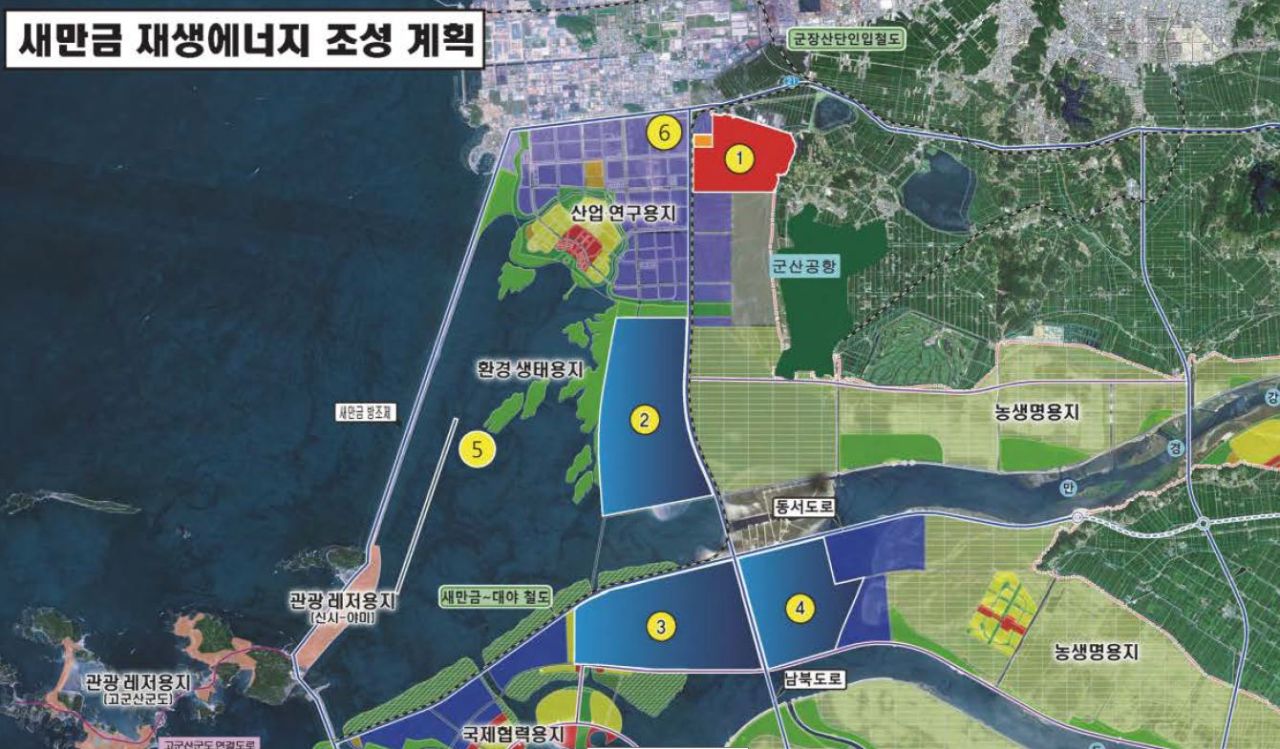Hanwha, LG eye world’s biggest floating solar farm project in Korea
Competition heats up as bidding begins for mega solar power project
By Kim Byung-wookPublished : Oct. 7, 2020 - 16:44

The bidding for the world’s biggest floating solar farm project is set to begin in South Korea, drawing interest from major domestic solar power companies, according to industry sources.
Korea Hydro & Nuclear Power currently aims to build a 2.1-gigawatt floating solar power plant worth 4.6 trillion won ($3.97 billion) that would spread over more than 30 square kilometers near the Saemangeum reclamation area in North Jeolla Province. When completed, the plant will be able to supply electricity to 1 million households.
This month, KHNP is expected to select the bidder for the first stage of the project, which would account for 300 megawatts, or 14 percent of total capacity. To clinch the first deal worth 660 billion won and to take initiative in following deals, the top three domestic players -- Hanwha Q Cells, LG Electronics and Shinsung E&G -- have joined the bidding.
Hanwha Q Cells, the world’s No. 6 solar module manufacturer by shipments as of last year, offers Q.Peak Duo Poseidon modules, specialized for floating solar farms, offering peak power of 420 watts and energy efficiency of 20.3 percent. Poseidon modules perform about 10 percent better than typical modules, as water reflects light and cools down the modules.
Peak power is the highest power output a solar module can achieve. Energy efficiency is the ratio of a solar energy converted into usable energy.
In 2018, Hanwha Q Cells exported 6,100 Q.Peak modules to a floating solar farm in Netherlands and also supplied its products to a floating solar farm at a reservoir in Ulsan in the same year.
Meanwhile, LG Electronics, which doesn’t manufacture solar modules for floating solar farms, is watching the market situation.
“LG Electronics is currently reviewing the project as floating solar modules are relatively not mainstream compared to land solar modules. LG Electronics has the technology, but it has to consider the return on investment and profitability,” an industry source said.
Shinsung E&G, which will supply solar modules with peak power of 440 watts and energy efficiency of 19.8 percent to a 73-megawatt floating solar farm to be built by Hanyang starting next year, is another player in the race.
“When KHNP evaluates bidders, one of the criteria is how much they can contribute to the local economy. For instance, KHNP checks whether bidders have manufacturing facilities in the region or use Korean-made parts,” a Shinsung E&G official said.
Shinsung E&G in June decided to construct a new solar module plant in Gimje, North Jeolla Province, with an annual capacity of 600 megawatts to produce 450-watt solar modules.
Hyundai Energy Solutions, though it won’t bid directly, is preparing to supply its solar modules specially designed for floating solar farms for the project.
By Kim Byung-wook (kbw@heraldcorp.com)









![[Hello India] Hyundai Motor vows to boost 'clean mobility' in India](http://res.heraldm.com/phpwas/restmb_idxmake.php?idx=644&simg=/content/image/2024/04/25/20240425050672_0.jpg&u=)








